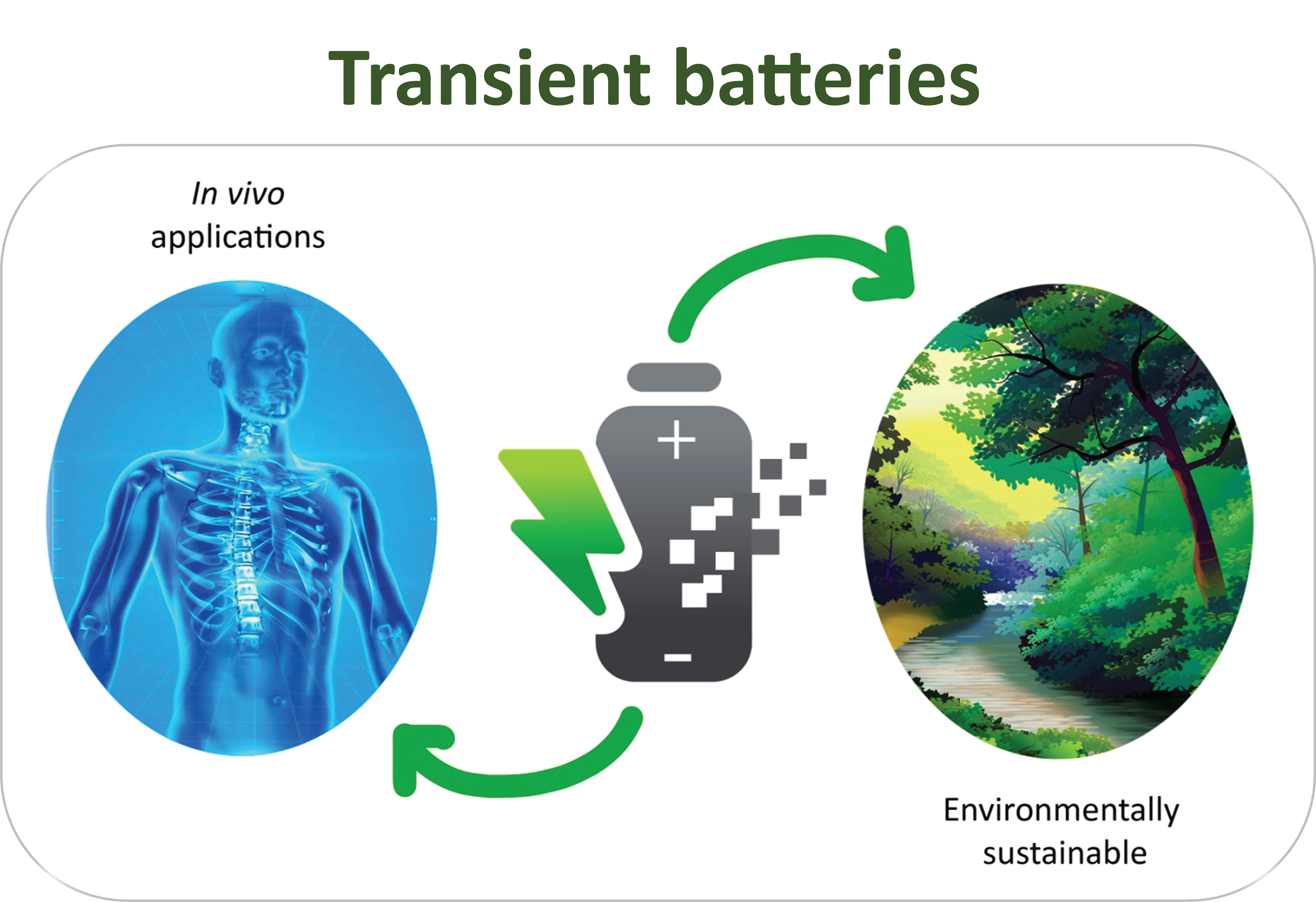Development of transient lithium-ion battery with a high-performance Cellulosic Separator
Transient/degradable technology is a flourishing research area aimed at designing materials, devices, or systems that undergo controlled degradation processes after a period of stable and reliable operation. Transient devices work exactly like their conventional analogs but have an extra advantage; these devices can disintegrate into the environment in a controlled fashion without leaving any toxic products behind. Transient technology is rapidly gaining ground for biomedical applications, zero-waste electronics, and data-secure hardware, to name a few. To power such devices, transient batteries are required. To date, there are very few reports on transient batteries in literature, mainly due to the lack of suitable soluble materials, fabrication schemes, and battery designs that must fulfill entirely different requirements than the traditional batteries.[1]
Here, we report the development of a fully transient lithium-ion battery (LIB) with competitive electrochemical performance. At first, we designed a degradable separator based on polyvinyl alcohol and cellulose nanocrystals that offer several unique advantages: electrolyte (organic solvent-based) uptake up to 510%, the ionic conductivity of 3.077 mS·cm-1, electrochemical stability up to 5.5 V vs. Li/Li+, and a high transference number of 0.56. As a result, a stable lithium metal deposition and a high specific capacity of 105 mAh·g-1 in Li-LiFePO4 cell for over 250 cycles were achieved for the separator soaked in organic electrolyte. The toxic organic electrolyte was replaced with a biodegradable ionic liquid, providing an ionic conductivity of 0.988 mS·cm-1 and a specific capacity of 87 mAh·g-1. Finally, the ionic liquid-separator pair was assembled into a fully transient lithium-vanadium(V) oxide (Li-V2O5) cell, which can be cycled over 400 times and degraded in 15 minutes once an aqueous trigger was applied.[2] This prototype of a transient LIB represents a proof of concept to develop innovative transient energy storage systems with a long life cycle.

[1] Mittal, N.; Ojanguren, A.; Niederberger, M.; Lizundia, E., Adv. Sci., 2021, 2004814.
[2] Mittal, N.; Ojanguren, A.; Cavasin, N.; Lizundia, E.; Niederberger, M., Adv. Funct. Mater., manuscript accepted.